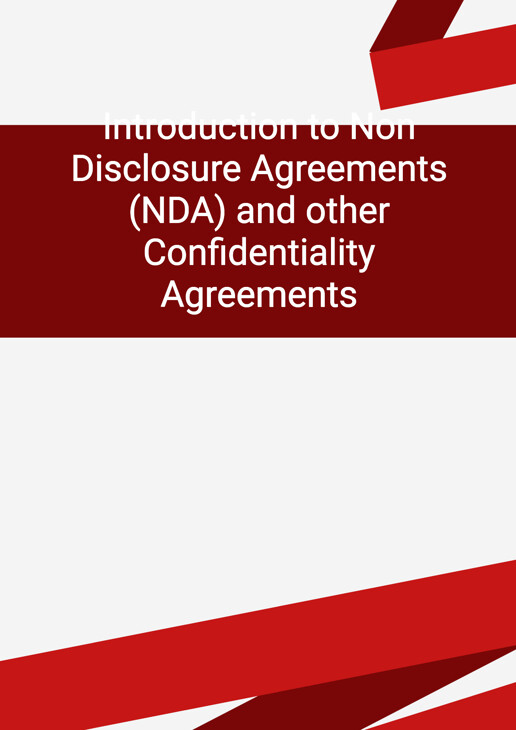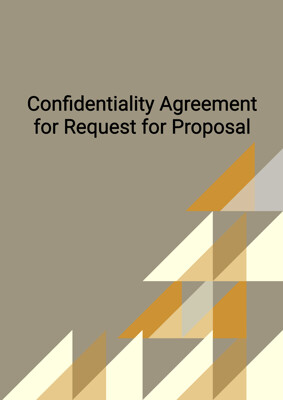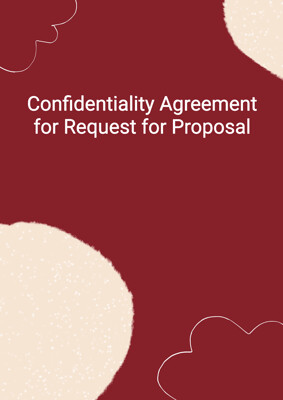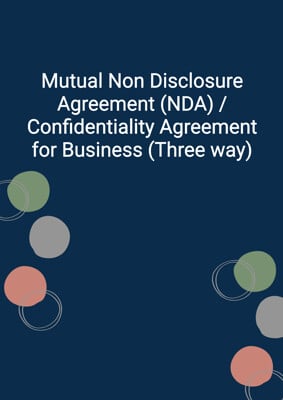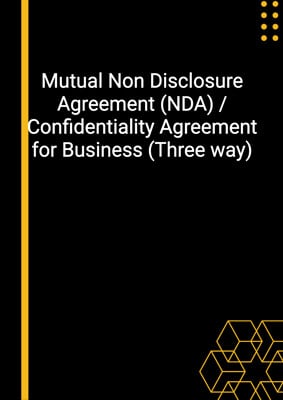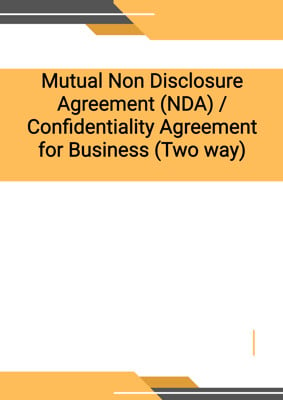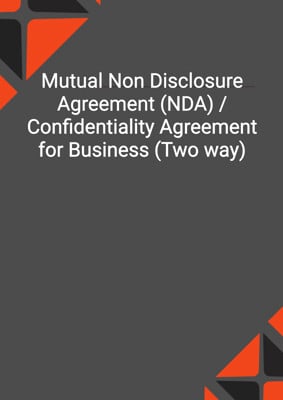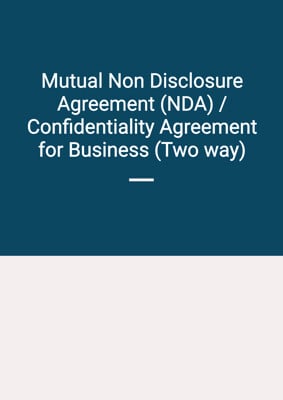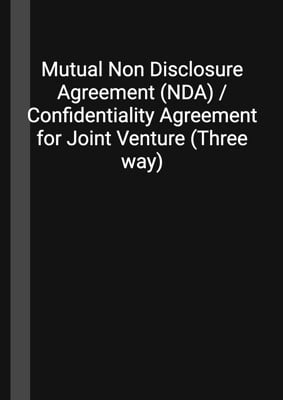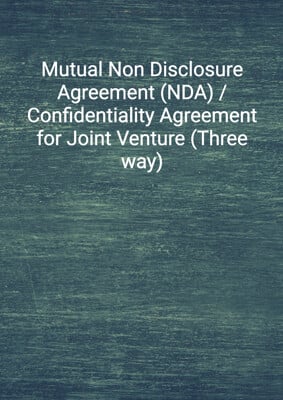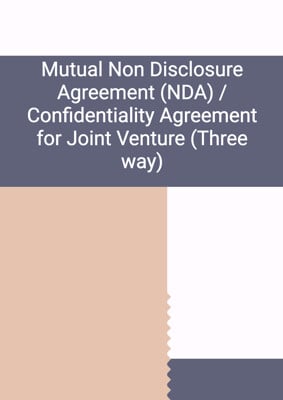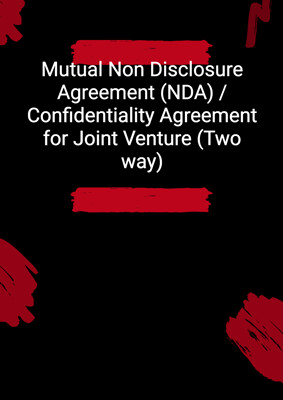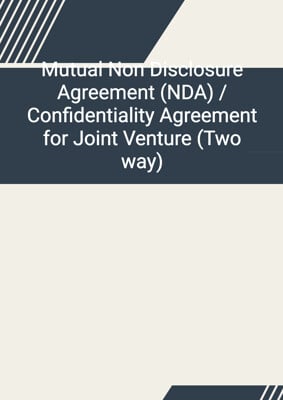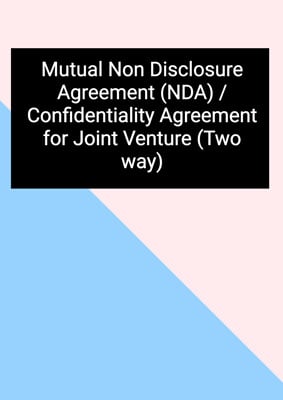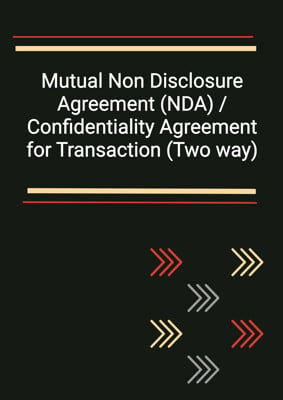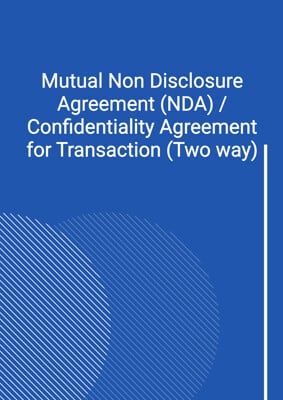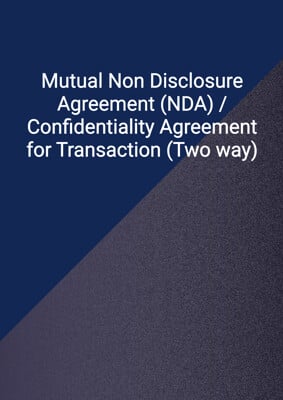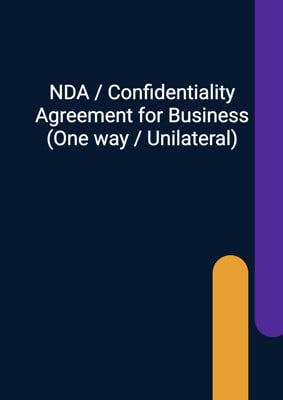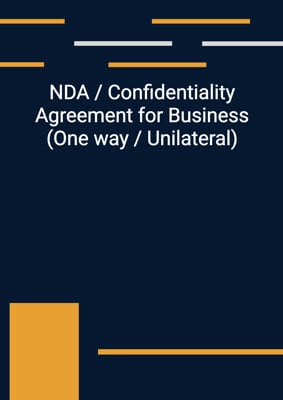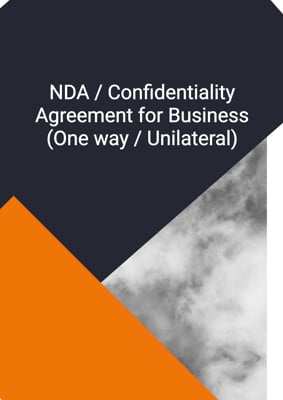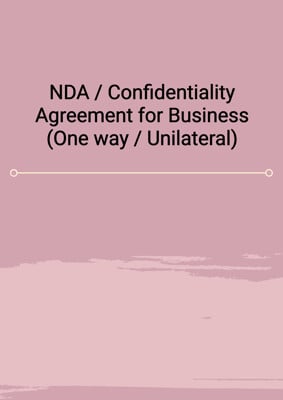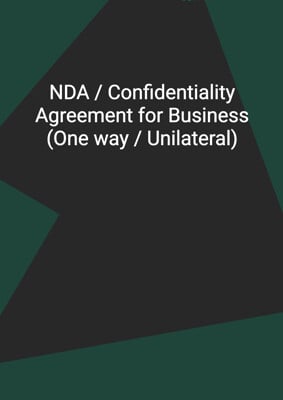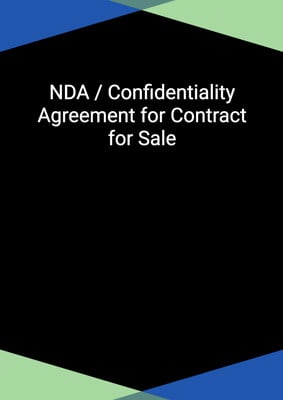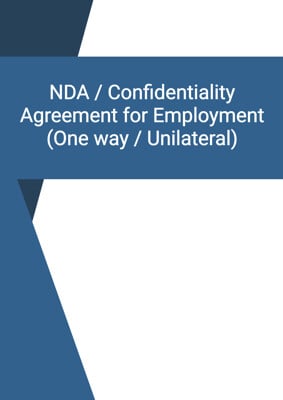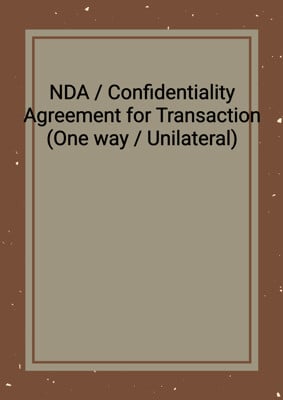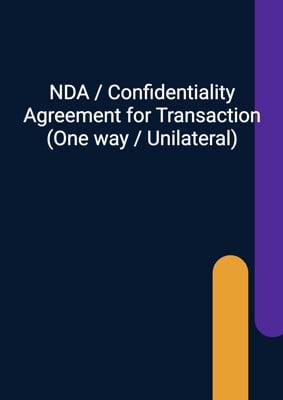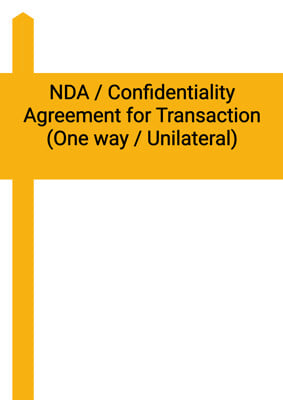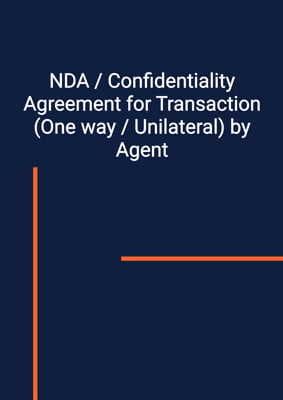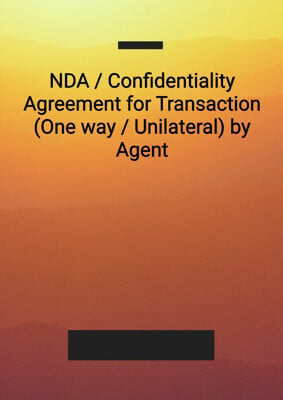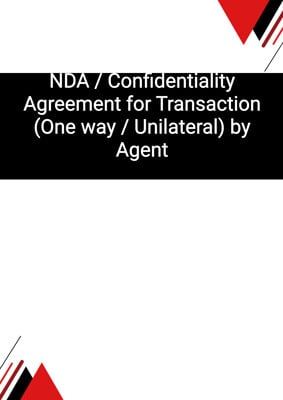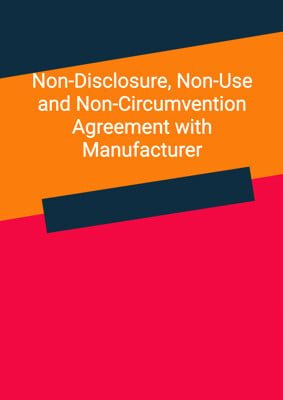How to Tailor the Document for Your Need?
01
Create Document
Click "Create Document" button and the document will be prepared with your account details automatically filled in.
02
Fill Information
Please fill in any additional information by following the step-by-step guide on the left hand side of the preview document and click the "Next" button.
03
Get Document
When you are done, click the "Get Document" button and you can download the document in Word or PDF format.
04
Review Document
Please review the document carefully and make any final modifications to ensure that the details are correct before publication / distribution.
Document Preview
Document Description
The document titled 'Introduction to Non Disclosure Agreements (NDA) and other Confidentiality Agreements' provides a comprehensive overview of various non-disclosure agreements and confidentiality agreements. It is important to understand the significance of these agreements in protecting sensitive information and maintaining confidentiality.
The document begins with a general summary, emphasizing that it does not constitute legal advice and recommending consulting a local lawyer due to jurisdictional differences. It then proceeds to provide a summary of different templates for non-disclosure agreements and confidentiality agreements.
The first template discussed is the 'NDA / Confidentiality Agreement for Business (One Way / Unilateral).' This agreement is suitable for discussing a business relationship and imposes a unilateral obligation of confidentiality on the party receiving the information. It can be in favor of the discloser, disclosee, or neutral.
Next, the document introduces the 'NDA / Confidentiality Agreement for Transaction (One Way / Unilateral).' This agreement allows the discloser to reveal transaction details to the disclosee and imposes a unilateral obligation of confidentiality on the receiving party. It can also be in favor of the discloser, disclosee, or neutral.
Moving on, the 'NDA / Confidentiality Agreement for Business (Two Way / Mutual)' is discussed. This agreement is suitable for discussing a business relationship and imposes a mutual obligation of confidentiality on both parties simultaneously. The level of obligations can be chosen as strict, neutral, or loose, even if they are reciprocal.
Similarly, the 'NDA / Confidentiality Agreement for Transaction (Two Way / Mutual)' is introduced. This agreement is used for disclosing transaction details and imposes a mutual obligation of confidentiality on both parties. The level of obligations can be chosen as strict, neutral, or loose, even if they are reciprocal.
The document also mentions the 'NDA / Confidentiality Agreement for Joint Venture (Two Way / Mutual).' This agreement is applicable when two parties agree to exchange confidential information before finalizing a binding joint venture agreement. It imposes a mutual obligation of confidentiality on both parties, and the level of obligations can be chosen as strict, neutral, or loose, even if they are reciprocal.
Furthermore, the document presents the 'NDA / Confidentiality Agreement for Business - Short Form (One Way / Unilateral).' This agreement is a simplified version suitable for discussing a business relationship. It imposes a unilateral obligation of confidentiality on the receiving party and is designed for quick signing without extensive negotiation. It can be in favor of the discloser, disclosee, or neutral.
Another template mentioned is the 'NDA / Confidentiality Agreement for Transaction by Agent (One Way / Unilateral).' This agreement is used when the discloser reveals transaction details to the disclosee through an agent, such as a bank or securities firm. It imposes a unilateral obligation of confidentiality on the receiving party and can be in favor of the discloser, disclosee, or neutral.
The document also covers the 'NDA / Confidentiality Agreement for Business (Three Way / Mutual).' This agreement is suitable for discussing a business relationship involving three parties and imposes a mutual obligation of confidentiality on all parties simultaneously. The level of obligations can be chosen as strict, neutral, or loose, even if they are reciprocal.
Lastly, the 'NDA / Confidentiality Agreement for Joint Venture (Three Way / Mutual)' is discussed. This agreement is applicable when three parties agree to exchange confidential information before finalizing a binding joint venture agreement. It imposes a mutual obligation of confidentiality on all parties, and the level of obligations can be chosen as strict, neutral, or loose, even if they are reciprocal.
Overall, this document provides a detailed introduction to various non-disclosure agreements and confidentiality agreements, highlighting their purpose and applicability in different scenarios.
How to use this document?
To effectively use the document 'Introduction to Non Disclosure Agreements (NDA) and other Confidentiality Agreements,' follow these steps:
1. Understand the purpose: Familiarize yourself with the importance of non-disclosure agreements and confidentiality agreements in protecting sensitive information and maintaining confidentiality.
2. Consult a local lawyer: Due to jurisdictional differences, it is recommended to seek legal advice from a local lawyer to ensure compliance with applicable laws and regulations.
3. Choose the appropriate template: Review the summary of different templates provided in the document and select the one that best suits your specific situation.
4. Customize the agreement: Once you have chosen the template, carefully review and customize the agreement according to your specific requirements. Pay attention to details such as the parties involved, the scope of confidentiality, and any additional provisions.
5. Seek mutual agreement: If the agreement is mutual, ensure that all parties involved agree to the terms and obligations. This may require negotiation and discussion to reach a consensus.
6. Sign the agreement: Once all parties are satisfied with the agreement, sign it to make it legally binding. Ensure that all signatures are obtained and properly documented.
7. Implement the agreement: Communicate the terms of the agreement to all relevant parties and ensure compliance with the obligations outlined. Regularly review and update the agreement as necessary.
8. Monitor and enforce: Continuously monitor the adherence to the agreement and take appropriate action in case of any breaches or violations.
By following these steps, you can effectively utilize the document to create and implement non-disclosure agreements and confidentiality agreements in your business or professional relationships.
Not the right document?
Don’t worry, we have thousands of documents for you to choose from:
